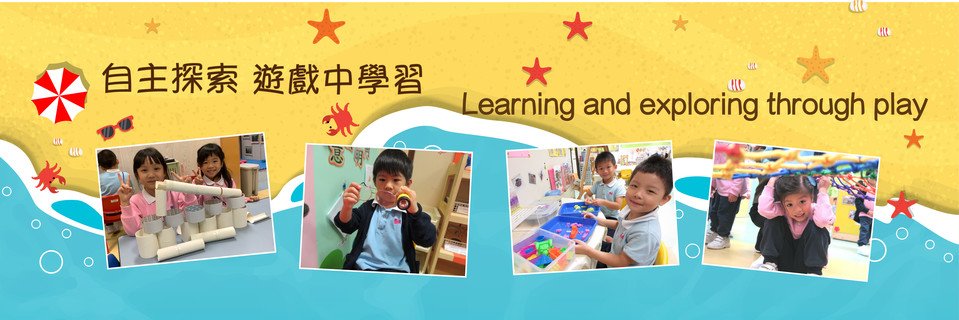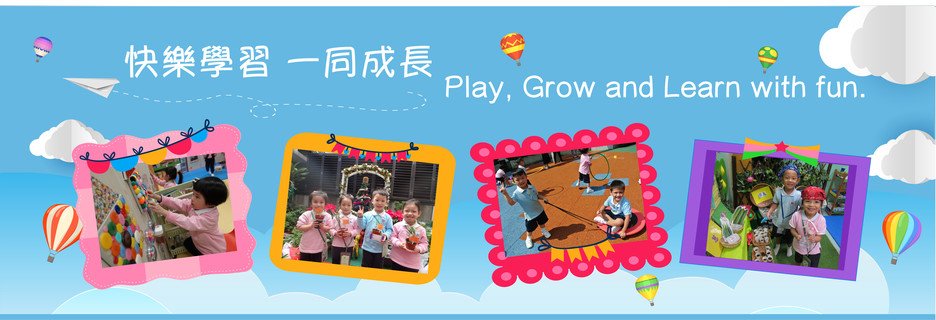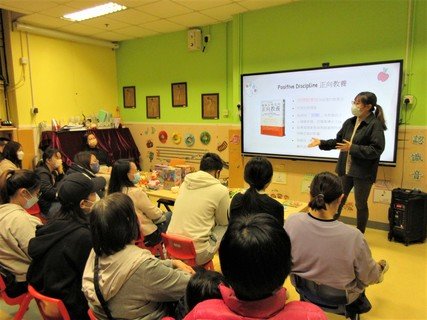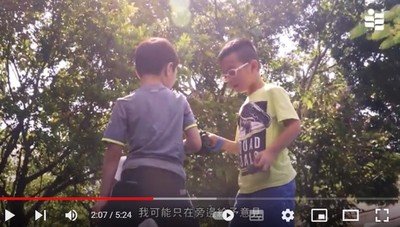Parent Education Activity Information Hub

Year 2024/2025
Topic
Emotional Expression and Regulation (Parent-Child Guide)
Centre for Child and Family Science, The Education University of Hong Kong: Parent Seminar (II)
Objectives
1. Helping young children recognize emotions
2. Understanding effective emotional communication between parents and children
Content
Identifying Emotions
"I feel ________ because __________________."
| Positive Emotions | ||||||
|---|---|---|---|---|---|---|
| Joyful | Excited | Grateful | Content | Calm | Proud | Optimistic |
| Anger-Related Emotions | ||||||
|---|---|---|---|---|---|---|
| Furious | Resentful | Feeling of Injustice | Offended | Threatened | Criticized | Hurt |
| Sadness-Related Emotions | ||||||
|---|---|---|---|---|---|---|
| Sad | Disappointed | Lonely | Guilty | Tired | Lost | Frustrated |
| Fear-Related Emotions | ||||||
|---|---|---|---|---|---|---|
| Panicked | Nervous | Worried | Uneasy | Anxious | Startled | Overwhelmed |
Helping young children recognize emotions
1. Home Environment Setup
• Display illustrations, photos, or posters depicting various emotional expressions on a specific wall or corner of the home
• Explain how different emotions are associated with specific facial expressions and behaviors
2. Discussing Daily Events
• Explore how specific events evoke emotional responses in children
• Acknowledge that different people may experience varying emotions in the same situation
Effective Parent-Child Emotional Communication
1. Active-Constructive
- Listen attentively and respond to what young children share
- Reflect on the emotions the child is experiencing
- Encourage children to share more details about the events
Specific Techniques
- Reflecting Thoughts(Repeat the child’s words、Highlight their feelings and thoughts)
- Sharing Joy Together
- Engaging Fully in the Situation
2. Empathetic Reflection
- Listen attentively to what children share
- Reflect on children’s negative feelings
- Guide children to share their thoughts about the event
Specific Techniques
- Name emotions clearly
- Leaning forward to listen actively
- Offer reassurance
Emotion Management
1. Thought changes
Appropriate Beliefs
• Foster a willingness to use proper emotion regulation techniques
• Encourage positive emotional development and reduce the impact of negative emotions
2. Verbal guidance
Using Appropriate Language to guide children in adjusting their thoughts and changing their perspective on their emotions
When children display intense emotions or tantrums
• Avoid immediate reactions or blame
• Show restraint and take a pause to focus on listening
3. Behavioural applications
► Emotion-focused reactions
- Confront events that have already occurred
- Manage negative emotions
- Discover meaning in events
- Help children improve their future performance
Examples:
- Remind yourself to "pause and think"
- Count backward slowly from 20 to 1 (taking two seconds for each number)
- Engage in activities you enjoy, such as painting, singing, or running
► Problem-focused reactions
If your child is worried about something that hasn't happened, guide them to face and address the core issue.
Topic
Emotional Expression and Regulation (For Adults)
Centre for Child and Family Science, The Education University of Hong Kong: Parent Seminar (I)
Objectives
1. Identify the sources of your parenting stress
2. Understand the concept of a "growth mindset"
3. Explore ways to express emotions
4. Apply various methods to regulate emotions
Content
Social-emotional Competence: Key Learning Areas
According to local research, young children's social-emotional development involves four main areas:
1. Cognitive Control
Young children effectively use memory, control impulses, and adapt flexibly to environmental needs.
2. Emotion Expressivity
Young children can express their emotions and explain the reasons behind them.
3. Emotion Regulation
Young children learn to regulate their emotions, organise underlying thoughts, and solve problems.
4. Empathy & Prosocial Behaviors
Young children can recognise others' emotions, display positive social attitudes, and enjoy interacting and making new friends.
Whay is EQ(emotion quotient) / EI(emotion intelligence)?
- A concept about being aware of one's own emotions and those of others
- Include: recognize, name, distinguish, adjust & regulate
Growth mindset/ incremental theorists
The belief that emotions are temporary and changeable suggests that if you feel upset or sad, although the feeling is uncomfortable, it can be altered by acknowledging it and taking steps, particularly on your own, to change it.
The Primary Role of Parents
- Reflect on how your experiences affect how you handle your child's emotions
- Cultivate your own growth mindset and set a good example for your child by demonstrating how to face negative emotions, such as sadness, anxiety and anger, with a “changeable” mindset
- Learn and frequently use various emotion regulation techniques
- When your child experiences negative emotions, clearly convey the message that "unhappiness will pass" while comforting them
Approaches for Emotion Regulation
Emotion-focused reactions
- Confront events that have already occurred
- Manage negative emotions
- Discover meaning in events
- Help children improve their future performance
Examples:
- Remind yourself to "pause and think"
- Count backward slowly from 20 to 1 (taking two seconds for each number)
- Engage in activities you enjoy, such as painting, singing, or running
Problem-focused reactions
If your child is worried about something that hasn't happened, guide them to face and address the core issue.
Emotional Readiness (“If-Then” Planning)
Examples:
"If I'm scared of sleeping alone, then I'll bring a teddy bear for comfort."
Highlights
Year 2023/2024
Topic
Rice Dumplings from Festive to Healthy –
Workshop for Parents
Speaker: Miss Tsang Man Yu (Registered social worker)
Objectives
1. To help children develop the habit of eating a balanced diet
2. To understand the importance of food safety
3. To make healthy and nutritious rice dumplings
Content
Tips for Parents of Picky Eaters
1. Combination of Ingredients
Prepare dishes that are colourful and mix ingredients that children favour with the ones they dislike
2. Styling
Create dishes together with children, e.g. carving carrots into preferred shapes or using moulds to craft rice into playful figures, etc.
3. Taste
Make salads with fruits that are appealing to children to attract them to eat
Why is Food Safety Critical?
“Diseases originate from what we ingest.”
How to Create a Safe Eating Environment and Provide Food Safely for Children?
- Safe Utensils (Utensils for children should be sturdy and break-resistant)
- Child-Friendly Chairs (Chairs for children should be equipped with backrests and armrests)
Highlights
Topic
"Understanding the Emotional Behaviours of Young Children" Parents Talk
Speaker: Miss Law Tsz Hin—Clinical Psychologist Social Welfare Department Central Psychological Support Service (Pre-school Service)
Objectives
1. Knowing Emotions
2. Knowing the Problematic Behaviours in Young Children
Content
What is Emotions?
• Emotions are natural responses.
• Throughout our growth, we continuously learn to recognize and accept our emotions.
• Children rely on us to guide them in learning, understanding, and managing their emotions.
Young Children's Emotional Management
Why can some young children regulate their emotions easily, while others seem to overwhelm their parents?
◆ Temperament
Individual physiological differences lead to varying reactions; some young children respond intensely and quickly, while others are calm and easy-going.
◆ Cognitive Development
Emotional concepts can be abstract and challenging to grasp. Not all young children can immediately find ways to handle complex emotions.
◆ Language Abilities
Young children might not possess adequate language skills to articulate their emotions and needs effectively.
◆ Problem-Solving Skills
Effectively managing emotions requires a combination of various skills, making it more challenging. Moreover, displaying emotional outbursts and exhibiting problematic behaviours are the most straightforward and accessible ways for young children to seek help.
Understanding the Causes of Problematic Behaviours
Problematic Behaviours: Temper Tantrums
⇒Causes: Weak language expression abilities, dislike for or misunderstanding of instructions, the emergence of individual personalities, and unmet emotional needs
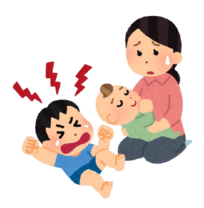

Does your child's stubborn behaviour leave you feeling drained?
Nurturing parent-child relationships and parenting go beyond merely correcting children's undesirable behaviour.
• Understand your child's characteristics and show them more empathy.
• Set realistic expectations and acknowledge that change may not come easily for your child.
• Begin by accepting your child's current behaviour and emotional state.
• Next, formulate a step-by-step plan to support your child.
• Aid your child in receiving and comprehending a variety of messages in daily activities, including:
- Instructions and routines
- Effective use of visual cues
• Work on enhancing your child's social communication skills, encompassing both verbal and non-verbal communication, as well as the ability to share.
• Help you child navigate through transitions and regulate their emotions.
• Utilize advanced notifications effectively (for example, using timers, clocks, calendars to clarify expectations and provide a concrete sense of how long to wait).

Parents Role
⇒ Understanding and Handling Young Children's Emotions
• Recognize and address the emotional needs and behaviours of young children.
• Support young children in learning to express and manage their emotions in healthy ways.
• Foster a sense of security and establish secure attachment relationships.
Research indicates that young children who have secure attachment relationships are more likely to develop better interpersonal relationships, greater confidence and independence, recover more swiftly from setbacks, and encounter fewer emotional difficulties during their childhood and teenage years.

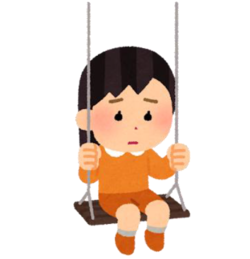

Approaches to Handling Young Children's Emotions
⇒ Become an "emotional coach" for your child:
1. Assist your child in acknowledging and accepting their emotions.
• All “emotions” are acceptable.
• However, not all “behaviours” are acceptable.
2. Help your child identify and comprehend their emotions.
3. Support your child through emotional experiences.
4. Aid your child in regulating their emotions.
⇒ Help your child learn to listen, understand, accept, and appreciate themselves.
Establishing Rules
1. Establish and uphold rules collectively.
2. Keep rules simple, clear, and comprehensible.
3. Adapt rules to suit young children's capabilities without overwhelming them.
4. Demonstrate empathy and offer support.
5. Employ rewards and praise judiciously.
6. Regularly review the rules.
⇒ All family members must adhere to the rules; for instance, everyone should tidy up toys after playing.
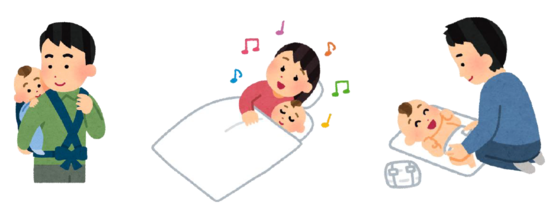
Secure Attachment Relationships
Through daily care, parents can gradually build a stable attachment relationship with their child by attentively responding to and addressing their child's emotional needs. These emotionally charged interactions enable children to learn to articulate their feelings and needs through the process of emotional exchange.
ObjectivesObjectivesObjectivesObjectives
Topic
「Household Games Tips」(Session 2)
Speaker: Miss Lee Wing Sze (Registered social worker)
Objectives
1. Knowing the seven senses
2. Knowing the sensory integration and sensory dysregulation
Content
Seven senses
• Sight
Visual observation and differentiation: recognising colours, quantities, and solving puzzles
• Hearing
Sound perception: rhythm
• Touch
Tactile sensation on the skin over the entire body
• Taste
Ability to distinguish different tastes and smells
• Proprioception
Proprioception: related to motor coordination
• Vestibular
Vestibular balance perception: the ability to change shape, position, space, height, and speed (throw and catch, balance beam)
What is the sensory integration?
• Collect external information through seven channels including the five senses, muscles and joints, vestibular balance, etc.
• Such information will be output to the brain for process and analysis. When the process and analysis are completed, the brain will give instructions.
• The ability of the brain to perform such integration is called “sensory integration”.
Impact of insufficient stimulation of children’s “seven senses” during their growth period (sensory dysregulation)
◆ Children with tactile hypersensitivity
• Do not like to get dirty or get their hands and feet dirty while playing.
• Become extremely emotional when changing diapers or cleaning the nose and ears.
• Not willing to touch soft, wet, and sticky things with their hands.
◆ Children with proprioception disorders
• Clumsy limbs, slow movements, and easy to lose direction.
• Inaccurate pronunciation, unclear speech, and slow language acquisition.
• Love to bite things, grind teeth, often pat or hit themselves.
◆ Children with vestibular dysfunction
• Dash around
• Active, but with clumsy movements and poor accuracy
• Not willing to run, jump or spin
• Not fond of taking transportation, prone to motion sickness and seasickness
• Poor balance, often fall when walking
Methods for strengthening the tactile system
- Writing on different semi-liquids (e.g., shaving cream).
- Gently brush the entire body with a soft brush to increase tactile input.
- Massage the whole body often with lotion.
- Blindfold and place different objects in the child’s hand to let him / her guess.
- Give the child cold and hot water bottles to feel the temperature.
- Clay play.
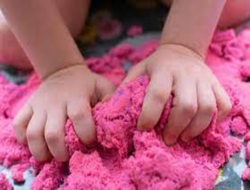

Suggestions to parents – 4 types of toys to promote children’s development of different abilities
1. Puzzle category: tangrams, 2D puzzles, 3D puzzles
- Train visual focus and spatial concepts
- Improve hand-eye coordination
- Cultivate independent and logical thinking
2. Building blocks: wooden building blocks
- Enhance spatial awareness
- Stimulate creativity and imagination
3. Board games: Jenga, memory matching games
- Learn social rules, such as waiting and taking turns
- Train the abilities of recognising and controlling emotions
- Promote social interaction and cooperation
4. Symbolic toys: cartoon dolls, role-playing
- Improve language communication and expression skills
- Promote social interaction and communication skills
- Cultivate empathy and sense of responsibility

Methods for strengthening the vestibular system
- Hold the child and tell stories in a rocking chair.
- Stick grids on the floor to let the child play hopscotch.
- Go to the park more often to play on swings, slides, and seesaws.
Methods for strengthening the proprioceptive system
- Encourage the child to help with moving or lifting heavy items.
- Push or pull to move heavy objects.
- Let the child crawl through cardboard boxes or small tunnels.
- Imitate animals, such as a crab walking, a frog jumping or a spider crawling.
- Write on an upright board to exercise upper arm muscles.

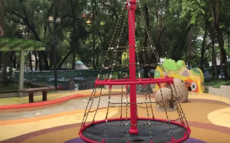
Do not overly protect children. Overprotection indirectly deprives children of opportunities for development and could lead to poor sensory development.
For example:
- Keep cutting food into pieces – children have no chance to exercise their oral muscles, and they may not be able to speak clearly as they grow up.
- Always holding children for fear that they may get into danger.
- Putting children in playpens for extended periods of time which restricts children’s activity.
Highlights
Topic
「Household Games Tips」(Session 1)
Speaker: Miss Lee Wing Sze (Registered social worker)
Objectives
1. Why play and what are the benefits?
2. Knowing the types of play
• Physical play
• Constructive play
• Dramatic play
• Games with rules
Play involves…
► Internal motives
► Positive emotions
► Active participation
► Elements of playing / simulating roles
► Emphasise process over outcome
► Children have choices
Content
Characteristics of early childhood learning
► Children are full of curiosity and would actively learn
► They learn by doing, enjoy using their senses to explore and understand new things
► They learn new knowledge based on existing experience and skills
The two sides of play
Playing too much
• Addiction and indulgence
• Losing oneself......
No play at all
• Suppression and isolation
• Lack of diversified development…...
Playing moderately
• Relax the body and mind
• Expressing oneself
• Promote parent-child understanding
• Enhance one’s multifaceted abilities
Such as improving tactile sensitivity, balance, and even cooperation and problem-solving abilities......
Why play games at home?
•Because children need games!
• Because games help to build a good parent-child relationship!
• Because the home is the place where children grow up!
Types of play
1. Physical play
Children chase and push each other in a playful way.
2. Constructive play
Children use toys such as building blocks and modelling clay to construct things that others can recognise.
3. Dramatic play
Children use spontaneous play to revisit and interpret their own life experiences.
4. Games with rules
Children learn reactions and interactions through chess games, card games, and ball games.


Constructive play
• Materials with fixed shapes, such as building blocks, LEGO, tracks, snowflakes.
• Materials without fixed shapes, such as water, sand, snow, and modelling clay.
Key points of constructive play
• Willing to try
• Moderate demonstration
• Self-guiding language
Example: "A dog has 4 legs and 1 head. How should you arrange the puzzles so that all 4 legs are here?"
• Review past experiences
Example: "Let’s think. How does the front of a minibus we always see look?"


Games with rules (About 6-10 years old)
Definition: Add some rules to the games, require participants to follow the rules in the games or competitions.
Purpose:
• Let children continuously practise to follow rules to increase their skills in various sports or games.
• Enhance social skills through achieving goals by mutual cooperation.
Examples: musical chairs, board game, card games, chess games, ball games.




Physical play
• Tag
• Sugar beans
• Eagle catches
• Pin the tail
Key points of physical play
• Pick a suitable location
• Establish basic rules
• Demonstrate appropriate force
• Praising children for waiting patiently and using appropriate force


Dramatic play (About 2-6 years old)
Definition: Play to simulate and revisit various situations in real life.
Purpose: Use simulation plays to increase children’s imagination and incorporate situations to involve movements/language/social interactions that can train their bodies.
Game Content: Find symbolic objects to replace certain objects in real life, pretending to be someone / pretending to be something.
Examples: Ride a broom as a horse / pretend to be a princess.
Key points of dramatic play
• Discuss roles / plots with children
• Encourage children to use props
• Record plots with text or pictures


Parental roles and assistance
Parents playing with their children can…
• Engage in interaction with children
• Guide children’s attention
• Imitate the gameplay of children
• Describe the actions of children
Help children understand what they are doing
• Appreciate children’s good behaviour, efforts, and strategies
Accuracy, Examples: “I really like the way you gently wrapped the wound on little bear!”
Immediacy, Examples: “Thank you for sharing your building blocks with me!”
Sincerity, Examples: “Just now you were so focussed when you solved the jigsaw puzzles. You’re awesome!”
• Use appreciation to drive young children’s strengths
Examples: “You always praise your classmates. You really know how to appreciate others!”
• When playtime is about to end
Examples: “I know you want to continue to play with mommy. But it’s getting late today. Let’s come again and play tomorrow!”
Conclusion
• Play is a need and a skill of children
• Parents are the best playmates of children
• Children learn through play
Highlights
Year 2022/2023
Topic
Parent-Child Interaction Therapy through Games (Session 1)
Speaker: Miss Lee Wing Sze (Registered social worker)
Objectives
Knowing the types of games
• Functional games
• Symbolic games
• Rule-based games
• Guided games
What is play therapy?
→ It is emotional counselling for children!
"Play is very important to children. Toys are children's words and play is their language." (Ginott, 1961).
Content
External events cause stress/threat to the adaptation system,
such as parental divorce, maltreatment, birth of younger siblings, or starting at a new school.
Successful adaptation
Conditions required:
• Positive self-image
• Sense of security
• Close and secure relationship
Negative reactions from maladaptation
• Negative emotions (depression, anxiety, anger)
• Violent behaviours
• Physical reactions
• Unwillingness to share
• Avoidance and withdrawal
• Regression behaviours
Benefits of play therapy
| Psychological benefits |
|---|
|
In play therapy, a child "plays out" their problems and feelings, which is equivalent to an adult "voicing out" their issues and difficulties in therapy.
What is "child-centred" play therapy?
Virginia Axline advocated incorporating person-centred theory into the foundation of play therapy, and proposed non-directive play therapy or child-centred play therapy.



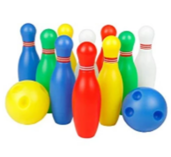
The most important attitude and skill during the “special playtime”
► Let the child take the lead!
► Do not ask questions or provide answers!

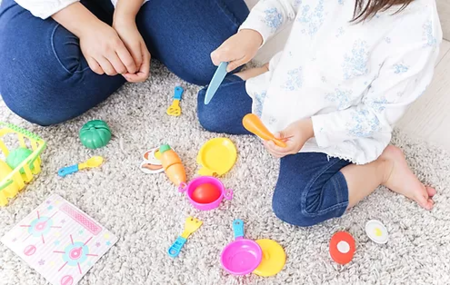
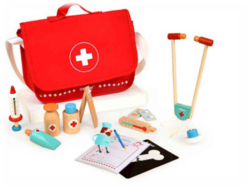
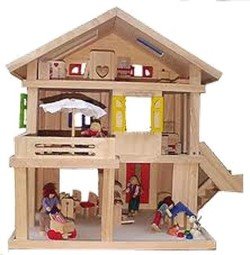
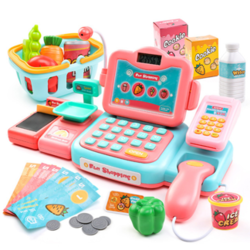

What toys should be used during the special playtime?
- Non-educational toys
- Non-branded/trendy
- Not easily breakable
- Non-mechanical toys
- Not competitive toys
Selection of toys and their symbolic meaning
- Soothing and everyday-life toys
- Toys for expressing anger and frustration
- Toys for building skills and abilities
- Toys for expressing creativity
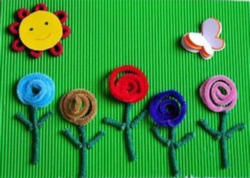

Reflecting emotions
Purpose: To enhance children's understanding of their own emotions and to feel understood by others.
• Describe the child's feelings and thoughts during play
• Respond to the child with empathy
Try acknowledging the child's emotions or feelings︰
Examples:
• I see that you… care for the baby....
• I sense that… you are a little happy....
• I see that you… want to put fruit in there....
• You seem to… like the glass of juice very much…
• I see that you… love to put the model here.
• I sense that… you are very content…
• I see you are very sad… as the blocks you worked hard to build fell down…
• I sense that… you seem frustrated… that the blocks keep falling down.
• I see that you want to… throw it on the ground… you want to do that....
• I sense that… you are somewhat annoyed…
• You seem to… dislike this toy… you don't like it very much.
Highlights
Topic
「Parent-Child Interaction Therapy through
Games+Household Games Tips」(Session 2)
Speaker: Miss Lee Wing Sze (Registered social worker)
Objectives
Knowing the types of multi-sensory games
• Sight
• Hearing
• Touch
What is the focus on the five senses?
• The five senses, including 'touch', 'hearing', 'smell', 'taste' and 'sight'.
→ are controlled by five areas of the cerebral cortex.
→ By activating the five sensory experiences of children, the sensory system is properly neurostimulated to promote the development of the brain's cortical layer, which effectively enhances the concentration and persistence of learning in the long term.
Content
Learning through the senses
Using multiple senses: hands-on with sight, hearing, touching, smell, taste
Five Senses Learning - Life (Learning to brush your teeth)
| Multi-sensory Learning |
|---|
Sight • Use picture prompts to help organise a series of actions for brushing teeth. Have the child stand in front of the mirror and look at the picture while following the cues. • Give your child colour preferences for toothbrush. |
Smell and Taste • Give your child flavour preferences for toothpaste |
Hearing • Play Tooth Brushing song |
Touch • Start by understanding your child's sensory response to toothbrush and toothpaste. |
Action • Use a toothbrush and toothpaste to remove dirt from a laminated picture of teeth. • Play a role-playing game and help the doll brush its teeth. |
Five Senses Learning - Academics (Chinese Characters)
Multi-sensory Learning - Sight
• Use word cards, enlarge characters and show illustrations.
• Use word cards to learn to break down radicals and parts of characters.
• Use different colours to show the components of a character.
• Use colours to highlight the strokes of words to correct mistakes.
Multi-sensory Learning - Hearing
• Use music to accompany contents that need to be memorised.
https://www.youtube.com/watch?v=De7KTuB_v1I
Twinkle (up down left right version)|Learn Chinese
https://www.youtube.com/watch?v=pPFDQNu_oIQ
(♬ Song of Shapes ♬ | Learn about Shapes by Singing Chinese Nursery Rhymes)
Multi-sensory Learning - Touch
• Write the word on the palm of the child's hand or on the back of the child's hand, then say the word or have the child's guess what the word is.
• Write the word on fine sand / rice / fine salt / sandpaper / flannel paper / table.
• “Write” the strokes of the word in the air, one by one.
(only effective if movements span across the body)
• Use clay / magnetic stickers to form words or use hands to shape words.
• Have children cut out the parts of a word to make a puzzle.
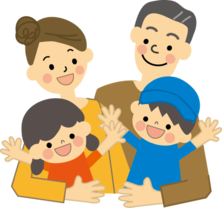
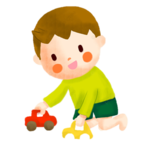
Playtime to enhance parent-child relationship
Clay painting
• Parents guide children to roll the clay into different shapes / lengths / sizes / colours to enhance children's cognition.
Colour: differentiate or mix different coloured clay;
Size: roll different sized pieces of clay;
Length: rolled strips of different lengths;
Quantity: rolling different quantities of ball-shaped clay;
Shape: rolling different shapes of clay.
• Complete the card instructions with clay according to the diagram.
Clay Learning
• Roll the clay into long strips.
• Make strokes (one colour for each stroke) and learn to make Chinese characters.
• Hold the child's hand and use his or her index finger to feel the protruding clay.
Role of Parents
• Observe carefully (children's abilities / interests / play processes)
• Give the child a chance to try
• Get rid of the criteria of success and failure
• Enjoy the play process
• Understand what makes it fun
• Recognise efforts and give praise
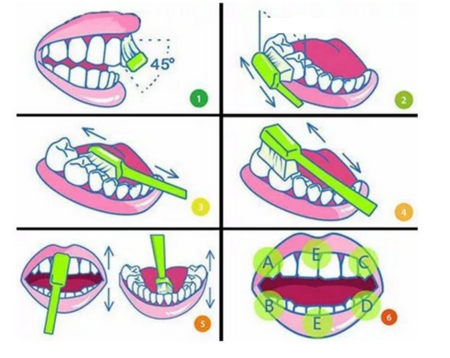



 - PowerPoint 29_3_2023 12_33_45.png)
 - PowerPoint 29_3_2023 12_30_34.png)

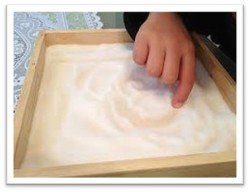
 - PowerPoint 29_3_2023 12_53_41.png)
Why play games at home?
- Because children need games!
- Because games help to build a good parent-child relationship!
- Because the home is the place where children grow up!

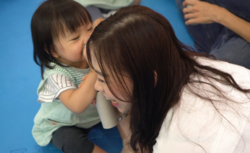


Highlights
Topic
「Positive Parenting」Parents Talk
Speaker: Miss Law Tsz Hin—Clinical Psychologist Social Welfare Department Central Psychological Support Service (Pre-school Service)
Objectives
• Knowing the Positive Parenting
• Knowing "Three Steps to Discipline"
• Knowing how to praise your child
What is the Positive Parenting?
Three main modes of adult-child interaction
Spoiling | Positive Parenting | Strict |
|---|---|---|
No limits | Authoritative, gentle and determined | Excessive control |
• Freedom without order • Unlimited choices | • Order and freedom • Limited choices | • Order without freedom • No choices |
Content
Positive Discipline
• Adlerian theory of parenting
• X Punishment and Rewards
• Emphasis on 'encouragement' in parenting
• Psychologist Dr. Jane Nelson in the 1980s
• The Adlerian approach was found to have a significant positive impact on children when used by parents and teachers.
• Develop a parenting approach that incorporates communication, conflict management and mutual respect.
Elements of Positive Parenting
• Mutual respect
• Understanding the beliefs behind the behaviour
• Understanding children's development and age-appropriate behaviour
• Effective communication
• Meaningful Discipline
• Focus on solutions, not punishment
• Encouragement
Children need to 'feel' good in order to 'be' good
The Four Rs Consequences of Punishment
R esentment
| R evenge
|
R ebellion
| R etreat
|

Basic Adlerian concepts
• The child's main goal is to have a sense of belonging and value
• Misbehaving children are frustrated children
• Equality
• Target-driven behaviour
• Mistakes are the best opportunity to learn
• Confirming messages of love
The Ten Basic Principles of Positive Parenting
- Connect with emotions before correcting behaviours
- Involveyour child(Offer acceptable choices, Give children a chance to help)
- Establish a routine
- Lead by example to teach respect
- Show your sense of humour
- Enterthe child's world
- Act in a gentle and firm manner: say what you mean and do what you say
- Be patient
- More guidance, divert attention and redirection
- Accept the uniqueness of the child
Three Steps to Discipline
Step 1
Empathy: Reflect the child's emotions
Purpose: To see things from the child's point of view and accept their feelings
• Show that you value your child's feelings
• Help your child to be aware of his or her feelings
• Help your child feel that he or she is understood
• Many people find it easier to start with the following formula:
"You feel (state the feeling) _______ because (state the thought behind the feeling)."
• Once you are familiar with this formula, you can apply your own terminology.
• Sometimes you can't be sure exactly what your child is feeling, and that's okay, you can guess.
Moments to reflect your child's emotions
When a child shows strong emotions (whether positive or negative) | When the child is hiding emotions | When you want to say 'no' |
|---|---|---|
Help him or her to understand that it is okay to have feelings. | Help the child identify his or her feelings. | Help your child feel that you have listened to his or her needs. |
► Sometimes you aren't able to listen. Children may want to be watched all the time, but sometimes adults have too much on their plate to listen. Tell them you can't talk to them until later.
Step 2
Point out the mistakes
Purpose: To point out restrictions or inappropriate behaviours
Step 3
Guide the right behaviour: effective instructions
Purpose: To show them what they can do
• Direct: tell your child what to do
• Viable: better chance of getting the child's cooperation
• Give choices
Give notice: set achievable and specific expectations, learn to wait
Purpose: To guide correct behaviour and learn to wait
• Achievable
• Specific, e.g., “we’ll go tomorrow on Friday.”
Applying "Three Steps to Discipline"
e.g., Children running around in the mall
- Reflect the child's emotions: Boy, you are too excited and want to run around.
- Point out restrictions/inappropriate behaviour: but you are not allowed to walk around.
- Guide the right behaviour/give notice:come and hold onto mommy’s/daddy’s hand, we'll walk together.
Ask yourself before you react...
- Can I be relaxed and calm enough to deal with it now?
- What are the emotions, thoughts and needs behind the child's behaviour?
- What do I want my child to learn?
Praise your child
The hidden voice in your child's heart: Daddy/Mommy, can you see that I'm good?
♦ Focus on correcting mistakes, scolding → make the discipline atmosphere negative.
♦ Focusing on positive behaviour → encourages cooperation and growth.
Moments to praise
When behaviour is good |
|---|
After correction |
|---|
| Before being naughty |
|---|
Seize the moment and give recognition and praise immediately.
This can be used in conjunction when reflecting children’s emotions and giving notices.
Praise for good work | Praise after correction | Praise before being naughty |
|---|---|---|
Spend more time with your child and you will find plenty of good deeds to praise. | e.g., The child was running around in the shopping mall and walked with mother slowly after caution. | e.g., When queuing for the Science Museum, the child remains calm and does not lose his temper, but after a while he may lose his temper. |
► Appreciate your efforts in trying! ► Thank you for your help in cleaning up! | Recognition after correction: You are holding mommy’s hand and walking along slowly, that's good! Reflect the child's emotions: Mommy knows you are excited and wants to run around! Give notice: You can run when you get to the park! | Praise before being naughty: I'd like to commend you for your patience and calmness!
Reflect the child's emotions: I know you are bored and anxious after waiting so long!
Give notice: Wait quietly for a while, then you can choose which section you want to visit first! |
The Principle of Praise
• Watch over your children (praise for good behaviour)
• Be honest with your children (praise only if he or she really did good)
• Praise your child in different levels (big praise for big deeds, moderate praise for moderate deeds, small praise for small deeds)
• No deception, no avoidance, let the child know what he/she is not doing well (no good behaviour, no praise)
Practise being an imperfect parent
When parents are able to face their own mistakes, accept their own imperfections and be willing to fix them, they are showing their childrenthat making mistakes is not the end of the world, but an experience along the way.
Treat yourself with empathy
• Mistakes are a great learning opportunity
• See the positive side of things
• Have the courage to accept imperfection because human nature is imperfect
• Calm down before dealing with problems
Three Steps to Restoring Relationships
- Admit it (be honest about the mistake)
- Reconcile (reconcile by apologising)
- Solution (work with your child to find a solution)
Highlights
Topic
Children's developmental and societal needs (Session 1)
Speaker: Miss Lee Wing Sze (Registered social worker)
Objectives
- Getting to know the socialising aspect
- Children's imaginary friends
- Tips for making friends
- Common peer-to-peer problems and how to deal with them
What is socialising?
- No one can survive in this world alone
- Communicate or connect with a variety of people on a daily basis, such as family (including parents, brothers, sisters), friends, neighbours, teachers, classmates or strangers on other occasions
- Children need to learn how to get along with others if they are to interact with them
- Tips for getting along with others → social skills
Content
The importance of forming friendships in the development of young children
The world of children and their peers is the main place where they build their character.
Lack of positive social interaction during childhood can lead to withdrawal, isolation, distress and anxiety in later life.
Children not being accepted by their peers at an early age is also a problem that can lead to school dropout, psychological and behavioural problems later in life(Annual Review of Psychology).
Social and interpersonal patterns of young children
1)Self-centeredness
Young children learn about the world from their own ideas and perspectives. They are not able to think outside of themselves and put themselves in other people's shoes to imagine how they think and feel.
2)Principle of reciprocity
The children's relationship is based on the reciprocal principle of "if you give me candy, I'll lend you a toy".
3)Splitting up and getting back together
Relationships in young children are fragile and friendships can be broken at any time by the slightest thoughtless word or action, and friendships can be formed at any time by someone showing concern and lending a helping hand.
Does your child have imaginary friends?
- Until the age of four, many children have imaginary playmates
- Child or animal, possibly a cloth doll
- Children may imagine them being friends/protectors/venting objects
- Allow children to learn to deal with different social situations in a safe environment
- Help them learn to think, regulate their emotions and, more importantly, develop and apply basic social skills in their daily lives
How do parents deal with their children's imaginary friends?
1. Understanding children's feelings through imaginary playmates
• Pay attention to conversations between children and imaginary playmates.
For example, parents can find out if their child is afraid to see the doctor when they are soothing the cloth doll on the way to the doctor's office.
• Talking directly to the cloth doll to help the child understand and encourage him or her to express his/her feelings.
2. Facilitating good behaviour through imaginary playmates
• Use imaginary playmates as role models to trigger motivation for children to behave well
• If your child refuses to take a bath: "Fluffy takes a bath every day, and if you don't like to be clean, he'll think you stink and won't want to play with you."
• If your child won't eat fruit or vegetables, give a small amount to the cloth doll
"Flora may not have eaten carrots before, but Flora wants to try some! Wow, it tastes good!"
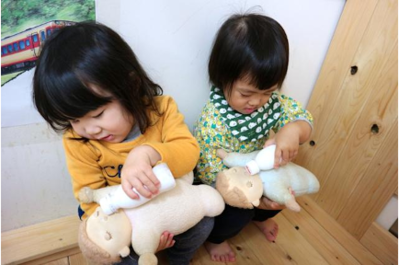

Common peer-to-peer problems and how to deal with them
What can I do if my child is very shy?
• Avoid sarcastic language and give more encouragement
• Understand that shyness is a personality trait, not a defect, and let your child learn to engage with others slowly




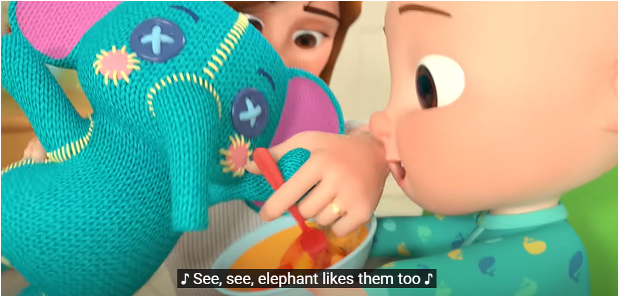
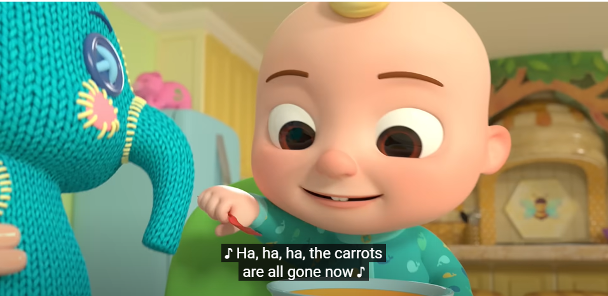
Social skills for young children that need to be improved
- Constantly talking about their interests, often changing the subject
- Can't read other people's non-verbal expressions
- Don't understand the meaning behind what people say
- Don't understand how people think and feel
- Difficult to see things from someone else's point of view
- No organisation or plan when doing things
How can I help my child to integrate into the groups?
- Observe first, then integrate
- Parents can start by observing what other people are playing with their children
During the course, parents give guidance (how to make the game more fun for everyone when they join in)

What should I do if my child grabs someone else's toy?
• Don't label children as bullying, understand that they have not yet learned how to solve problems and consider the thoughts or feelings of others
• If a problem arises, you can first observe how the children react to each other and intervene at the appropriate time. Don't judge and take sides!


What can I do if my child refuses to queue up and take turns with a playmate, or insists on playing for a while longer?
• Talk to your child while he or she queues to distract him or her
• Tell your child how long he or she can play beforehand
• Before the game is about to end, give your child the mental preparation: "Time is almost up, I'm going to count to ten and it's going to be over, it's the next child's turn".
Highlights
Topic
Children's developmental and societal needs (Session 2)
Speaker: Miss Lee Wing Sze (Registered social worker)
Objectives
- Recognise eight important social skills for children to maintain positive relationships with friends
Content
Eight important social skills
Skill 1:Identify and understand the emotions of others, communicate verbally and non-verbally
Skill 2:Recognise the impact of their behaviour on others and their surroundings
Verbal and Non-verbal communication
- Sometimes, children may not be able to understand all the instructions given by adults, but they are good at observing the gestures and gaze of adults to understand the situation with the information of their surroundings.
Young children enter the language communication stage where they begin to learn to integrate non-verbal and linguistic communication messages.
► If the parent says to the child, “Do it again!”
Literally, the child is supposed to repeat the actions just mentioned, but when the parent speaks in a short, stern tone, raises his or her voice, expresses displeasure and crosses his or her arms, the child who is aware of these non-verbal messages will understand that he or she has made the parent angry and will not dare to do so again.
Non-verbal communication
- Body language (e.g., facial expressions, eye gaze, body movements and social distance)
- Sub-language (e.g., tone, volume, speed)
- Facial expressions: emotions of joy, anger, sadness and indifference, dissatisfaction, recognition, etc.
- Eye gaze: tracking what the other person is looking at so that we can establish a common focus and communicate smoothly and effectively.
- Body movements: reflect our internal state of mind, e.g., tense body means nervousness.
Skill 3:Understand and respect the views of others
Skill 4:Learn how to resolve conflicts and contradictions
Children aged 2-6 are still in a self-centred stage and tend to think from their own perspective. They are not able to understand things from other people's standpoint, which leads to endless arguments. This is an inevitable process in children's development and interaction with others.
Parent's role:
1) You can let them work it out on their own first to enhance their ability to communicate and solve problems together.
2) When a child is unable to solve a problem on his or her own, parents should intervene and listen patiently to the child's account of what happened.
3) It is not advisable to jump to conclusions before understanding the cause of the conflict. Through dialogue, children can try to understand other people's views and thoughts, understand other people's feelings and learn respect and social skills when dealing with others.
Video appreciation
1) Clearly identify what the child has done wrong
2) Tell your child how this affects others
3) Show the child how he or she can achieve the same goal
4) Show the child what can be done to make up for the mistake now
5) Build logical consequences and empathy
( https://www.youtube.com/watch?v=abxoL192twQ&t=234s)
Skill 7:Reduced impulse behaviour adjustment
Impulse control training
1) Communication: encourage your child to talk about their feelings
2) Memory: remember causes and consequences
3) Role models: who your child learns from
4) Exercise: regular exercise
Training game
Everyday life - shopping activities
1) Decide with your child at home which items to buy at the supermarket or market and write them down, then go shopping together and train your child to ask the staff for the location of the items if necessary to develop independence.
2) Through shopping activities, children can learn the names of objects and categorise them, as well as develop their memory and communication skills.
Skill 8:Enhancing self-confidence and self-esteem

Conclusion
Human beings are herd animals and socialisation is a necessary skill.
Developing children's social skills from an early age will be beneficial to their future personality development and interpersonal interactions. There are 4 major steps parents can take:
1) Observe and imitate
2) Practice from games
3) Practical exercises
4) Give positive feedback
Develop the ability to get along with others and equip children with positive interpersonal skills.



Skill 5:Controlling emotions
Help children learn how to control their emotions
- At the beginning, take the initiative to help soothe the emotion of your child by patting him or her on the shoulder or back, hugging him or her, or letting him or her hug his or her favourite stuffed animal or small towel.
- You can teach him or her ways to relax, such as deep breathing.
Examples:
Parents can try asking "Did something happen today?"
Find out what the child is experiencing, feeling, thinking and his or her actions.
• The child's book was torn by another child (experiencing)
• He feels sad (feeling)
• Because he thinks his friend doesn't like him anymore (thinking)
• So the child doesn't want to go to school tomorrow (actions)
Skill 6:Increase patience and tolerance
Children aged 1-3 have an attention span of about 10 minutes
The prefrontal lobe of the human brain is responsible for attention, control, emotional regulation and moral judgement. However, the neural network and prefrontal lobe of the brain are not yet fully developed in young children, so they are more prone to distractions and have shorter attention spans than adults.
Examples:
What should I do if my young child chatters and interrupts a lot?
Causes of behaviour
• Young children have social needs too.
• Parents are able to talk and play with their children in their daily lives and their needs are naturally met in this area.
• When a parent is busy with work, household chores or guests, the child may be left out. The child will try to get the parent's attention by interrupting, hoping to enter the adult social circle and participate in adult conversation.
Immediate handling
(1) Give your child 30 seconds of attention
1. Listen patiently to the child's report and comments. When the child has said what he or she wants to say, or taken a deep breath, the parent can interrupt the child and state a restriction on the child's behaviour.
2. "Thanks for telling me about this, but now I have to talk to uncle about work" and "I won't have time to talk to you in detail until tonight".
3. Then turn around and go back to your work or continue talking to your client and ignore the child.
(2) Invite your child to join the conversation
1. When guests come to visit the family, parents can invite their children to join the conversation and teach them the right way to get along with others.
2. Parents may wish to ask their child, "Would you like to sit down and talk to your uncle or aunt for a while?" Parents should point out to the child that the conversation should not just be about him or her, but that everyone else should have a chance to speak as well, and that if the child agrees, he or she can formally join in.
3. Adults sometimes need to accommodate children by talking about things that children can understand or know/slowing down a bit/allowing time for children to express their views/not laughing when children say ridiculous ideas or comments.

Highlights
Topic
"Keeping Children Safe at Home: Essential Tips"
Speaker: Miss Tsang Man Yu (Registered social worker)
Objectives
- Importance of Home Safety
- Safety Strategies
- Techniques for Explaining Home Safety Knowledge to Children
Content
Children Home Safety
- According to statistics, home accidents are most frequent among children aged 0-5.
- Children have not fully understood what is dangerous yet.
- The activity range of children aged 3-5 gradually expands, making them prone to accidents such as falls, collisions, and scalds.
- If a child is injured in an accident, seek medical attention as soon as possible.
- Most home accidents can be prevented.
- Be vigilant about potential home hazards and regularly conduct safety inspections.
- Do not leave children alone at home.
- Teach children accurate knowledge about home safety.
Preventing Home Accidents - Safety Strategies
Safety Strategies 1
- Preventing falls
Recommendations:
✓ Keep the floor dry.
✓ Properly store miscellaneous items.
✓ Secure carpets to prevent slipping.
✓ Store sharp objects, medications, and cleaning supplies safely to prevent children from accessing them.
Safety Strategies 2
- Avoiding collisions with objects
Recommendations:
✓ Keep items properly arranged.
✓ Store miscellaneous items appropriately.
✓ Use furniture with rounded corners or plastic corner protectors.
Safety Strategies 3
- Preventing slips in the bathroom
Recommendations:
✓ Keep the floor dry to prevent slipperiness.
✓ Do not store water in bathtubs, sinks, or buckets when not in use.
✓ Keep toilet seat covers closed.
✓ Avoid leaving children alone in the bathroom.
Safety Strategies 4
- Preventing accidents caused by curiosity about the outside view through windows
Recommendations:
✓ Install safety window bars.
✓ Properly secure curtain cords.
Safety Strategies 5
- Preventing falls from beds
Recommendations:
✓ Parents should sleep near the edge of the bed.
✓ Install bed rails.
Safety Strategies 6
- Avoiding scalds from touching hot food
Recommendations:
✓ Install barriers at the entrance to the kitchen.
✓ Do not allow children to enter the kitchen unaccompanied.
✓ Avoid using tablecloths as children may pull on them.
Safety Strategies 7
- Preventing finger injuries from doors
Recommendations:
✓ Use magnets to secure doors or use door finger guards.
Safety Strategies 8
✓ Properly store all foldable furniture in the house, such as folding chairs and tables.
✓ Check if safety locks are properly engaged.
Safety Strategies 9
- Preventing electric shocks
Recommendations:
✓ Ensure electrical appliances meet safety standards.
✓ Cover electrical outlets and securely close drawers.
Home First Aid Kit
1. Saline solution, adhesive tape
2. Bandages, such as gauze
3. Cotton balls for cleaning utensils with disinfectant
4. Triangle bandage
5. Bandages
6. Safety pins or medical adhesive tape for securing bandages
7. Disinfectant alcohol for disinfecting utensils, not for direct application to wounds
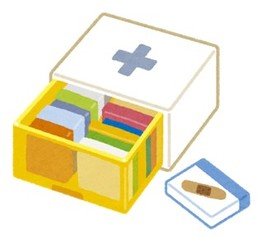
Conclusion
- Parents should remain vigilant.
- Do not leave children alone at home or rely on older siblings for supervision.
- Teach children appropriate safety knowledge at the right time and prevent them from intentionally "challenging" crises out of curiosity when parents are not paying attention.











Explaining Home Safety Knowledge to Children
- Learning from experience
- When encountering home hazards, parents are advised to face and deal with them together with their children, teaching them common knowledge about home safety.
- Teach children the correct ways to prevent home accidents.


Positive Parenting Techniques
1. Prompt response and companionship
Purpose: Respond promptly to children's needs and reduce the occurrence of negative behaviour.
2. Clear and positive instructions
Purpose: Help children understand specific correct behaviours.
3. Specific praise
Purpose: Encourage continued good behaviour and build children's self-esteem.

